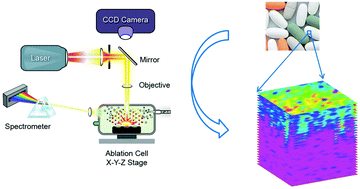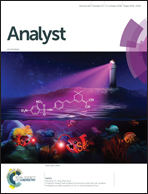In situ analytical characterization and chemical imaging of tablet coatings using laser induced breakdown spectroscopy (LIBS)†
Abstract
Laser induced breakdown spectroscopy (LIBS) has emerged as an innovative tool for quantitative and qualitative elemental analysis in pharmaceutical research. Herein, the potential use of LIBS for rapid characterization of tablet coatings is illustrated, including the investigation of coating thickness, coating uniformity and localized coating contamination. The laser shot number required for penetrating the coating correlates well with coating thickness determined from traditional scanning electron microscopy measurements. Each laser shot represents a 2.58 μm coating thickness. The inter-tablet coating uniformity was directly visualized using LIBS-based 3D chemical imaging, and the intra-tablet coating uniformity was quantitatively investigated. To our knowledge, this is the first report of 3D LIBS-based chemical imaging being utilized for quantitative analysis of pharmaceutical tablet coatings. In addition to elemental information, the accurate location of contaminants on the tablet coating was rapidly identified using 2D imaging. These results pave the way for LIBS to be a valuable technique for the analysis of pharmaceutical tablet coatings.



 Please wait while we load your content...
Please wait while we load your content...